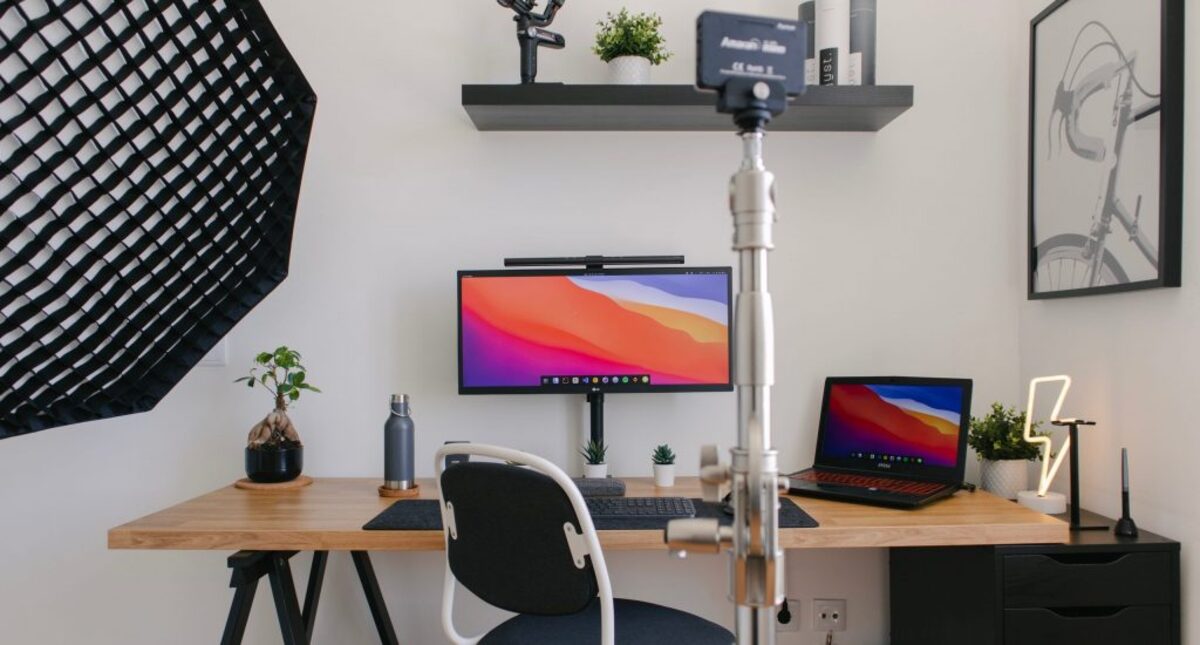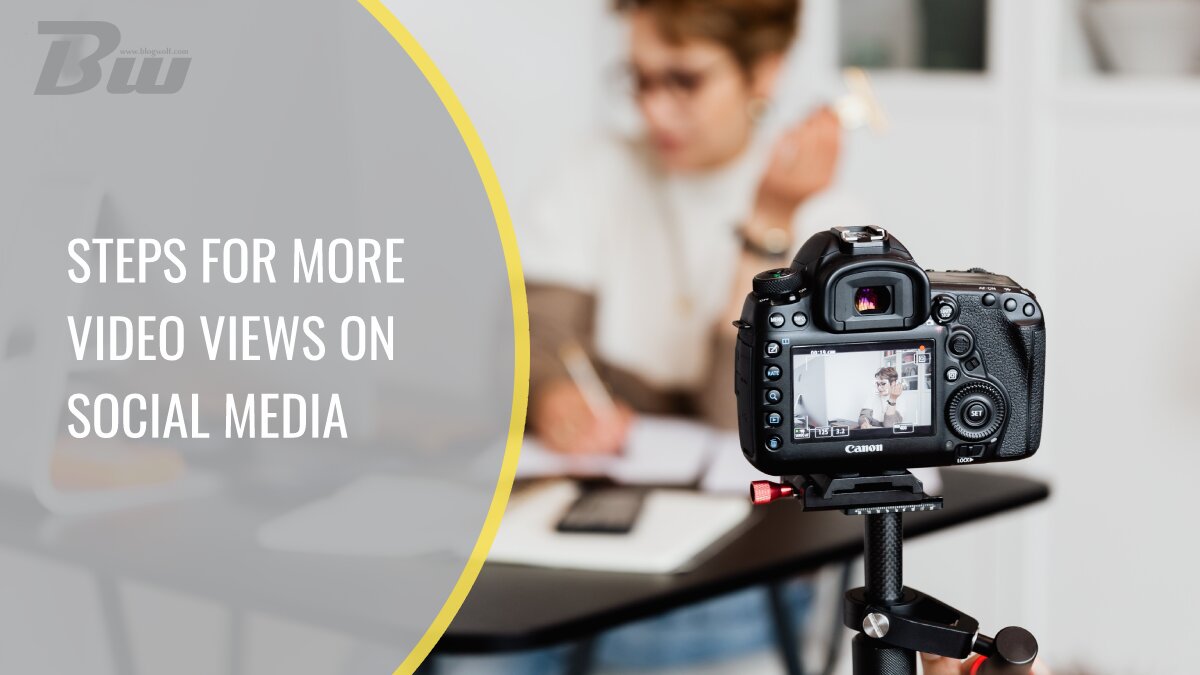Social networks are increasingly returning to organic reach, so appearing and good positioning is difficult, and attracting attention is even harder. The question is, how can one stand out on social media? One way to stay ahead of others is to maximize your content upgrade. The solution is a video on social networks.
Videos on social media are so appealing that algorithms push them to the top. Facebook, Instagram, and LinkedIn are networks where everyone wants to do as much as possible in these omnipotent formats. Whoever succeeds in that wins in algorithms and in the ‘competition’ for attention. Instead of just creating a post to link to a written article, make a small advertisement and present your article to the public through video content.
In this blog post, we will reveal to you how to make videos for social networks, which will keep the existing one and attract a new audience.
What Do You Need?

In this text, we will not talk about the average video content recorded on mobile phones because that is what everyone does. It can be better than that. A little more effort will bring you much better results.
Here are the key items for posting videos on social media with not much equipment and software. You need:
- Tripod and decent camera
- Microphone and quiet room
- Light or window
- Basic editing software
- Active following on social networks (LinkedIn, Facebook, Instagram, or Twitter)
1. Set Up Once and Record a Lot
Once you have put everything in place, use that time to capture more content at once. This kind of “serial shooting” means you make the most of that day, make your job easier, and don’t play with lighting over and over again. If you have not built a stand-alone recording studio, all you have to do is set up the camera in a sunny corner of your home or office.
Here are some examples:
Place the camera on a tripod at a relatively short distance from yourself – so your head will fill most of the frame. You don’t have to possess a professional camera microphone; you can use a podcasting microphone connected to your computer via USB. You need to set a few meters away from the microphone and the wall so that your voice does not resonate.
2. Shoot
We suggest that your video lasts one minute because it is the perfect amount of time for social networks (and for some, it is the only allowed time).
Some of the ways to record your video are:
- Show a smile – 0:00
This may be the first frame of your video.
- Introduce yourself – 0:02
It is enough to say only your name and title, that is, what you do for a living.
- Tell the audience what you are doing in the video – 0:05
“I’m sharing with you an article about …”
“This is just a quick video in which I’ll tell you …”
“Here’s a brief summary of my latest tips …”
These are the seconds that will be seen even before someone clicks on your video, so you need to start it with great energy, strong statements, and use body language.
- Summarize the article – 0:45
Quickly browse the summary of the article, which should have about five points with a few words about each. Just list the key points as if you were telling someone about it in a voicemail message. If you happen to feel like you did something wrong, just stop, smile, and repeat that part.
- Suggest to the audience to click – 0:55
“If this sounds useful to you, just click on the link in the description …”
“The link in this post will lead you to the complete process of…”
- Thank them for watching your video – 1:00
It can be simple gratitude like “Thank you” or “Thank you for following me.”
3. Import, Assemble, and Sync
It is important to synchronize audio and video. The audio waveform needs to match the video and audio content you recorded separately. In making corrections, we advise your face to fill in at least 30% of the video. In addition, you should take care of the safe zones on the screen – leave room for possible inscriptions and controls of the video player under your face. Make sure the material you use in the remaining seconds of the video is time-synchronized and appears when you talk about it.
4. Edit and Add Titles
The next step is to edit your video. This means possibly shortening the minutes in order to reduce it to one minute, then inserting additional effects and the like, but also adding a title, i.e., the key that will attract the audience. The very title text of your video will draw the audience to your content. A good title is also important because of its accessibility.
5. Save Your Video
In this step, you need to save the file as MP4 on your computer, and after that, it is ready for the next step.
6. Add a Tracking Link for the Campaign Tracking Code

On social media, you can track how your audience reacts, that is, how many likes, comments, shares, and views your video has.
However, social networks will not show you whether visitors clicked (traffic) or what they did after visiting your site (conversions). To do this, you need the campaign tracking code. Use a simple
URL creator to track codes (media, sources, and campaign names) to a link to your article. You need to link it all to Google Analytics. You will use this link with the tracking code in a post on social media, thus, enabling traffic and conversion tracking in Google Analytics.
7. Post the Video on Social Media
Now is the time to fit all these steps into one big step, that is, to post your content on social networks. You need to create a new post on social networks and import your video. Then, add a link to the tracking code.
Your post should contain numbers, quotes, hashtags. Also, use line breaks and special characters or emoticons. We also advise you to tag contributors if they are present in your content or have been part of it in any other way. Any form of joint marketing content and interaction with the audience is a big plus.
8. Promote Your Video/Post on Social Media

When you launch your video as a post, you need to send it to a certain number of people in order for the algorithm to run because the algorithm is the item that pushes the video to the top of social streams.
You can do this as follows:
- Email people you think will benefit from your content
- Share it with a relevant private group on Facebook, Viber…
Ask people to like the post, comment, and share it on their profiles. There are also tools you can use to promote your content in the form of paid advertising. One of these tools is Facebook Ads Manager. Content is a great way to promote your business. Video, for its part, is a great way to promote content. And, sharing videos directly with close friends is a great way to promote videos on social media.
9. Measuring Results

The campaign tracking code you added allows you to see traffic, conversion rate, and new subscribers to your newsletter. Benchmark is the service that might help you with the latter. Its goal is to assist you in spending less time setting up and customizing your contact list and more time watching it expand. If we think better, it is actually a marketing service helping you make the list of subscribers, shape newsletters, and send them to your key audience.
Video reach is a function of the size of your network. Larger and more active followers will see greater reach and engagement of any social activity. The results vary, depending on the content itself and, of course, the campaign.
Counting of Video Views by Social Media
It is crucial to realize that no two platforms are the same while creating social media video campaigns. Not only are the types of clips you watch on various platforms varied, but what qualifies as a view in each of them might be radically different. A view on Facebook, for example, is defined as someone viewing three seconds of a video ad, but a view on YouTube is defined as someone viewing 30 seconds of a video ad. But why should you be concerned? Isn’t a view just a view? In some ways, yes, but in others, no.
This information is important to know since it affects the return on investment (ROI) of your ad strategy. Because most social media platforms charge per-view fees for video ad placement, the difference between someone watching three seconds of your ad versus 30 seconds can have a significant influence on your campaign’s overall cost. As a result, understanding how different social media platforms monitor views is crucial. It can save you time and money while also ensuring that your adverts reach the widest and most relevant audience possible.
We put together a quick tutorial to help you understand and compare the different social media networks’ video views. We went through what counts as a view on each platform, as well as the maximum video length allowed on each, and whether or not they have features like auto-play (which means your content will start playing automatically when the user sees the platform’s ad) and auto-loop (an auto-repeat function). We also look at how each social media platform handles audio (are videos muted or turned on by default) and how ad pricing is calculated.
YouTube

YouTube is the most popular video-sharing platform on the Internet. Unlike Instagram, which emphasizes the sharing of all visual content (we will get to that below), YouTube focuses solely on videos. While you can promote on YouTube using videos, it is also worth noting that you can share or embed YouTube videos on other networks, such as LinkedIn and others. YouTube’s advertising potential is not limited to the site.
When someone sees 30 seconds of a video or less, but if the video is shorter than 30 seconds, it counts as a view on YouTube. For unverified accounts, the default limit for the maximum video length is 15 minutes. For accounts that are verified, users can upload a video for up to 12 hours. Auto-play is enabled on YouTube, but auto-loop is not. Default audio is set to on. Ad prices are calculated on this social media in a way that advertisers set a maximum bid that they are willing to pay for ad space on the site.

Instagram is a completely visual social media platform. It is all about aesthetics since the platform allows users to easily and quickly share visual information with one another. As a result, videos play a big role on the platform and provide a lot of room for video advertising.
When someone sees the first 3 seconds of your video of any length (but up to a maximum of 60 seconds allowed) counts as a view. Both auto-play and auto-loop are set on as default. Mute is the predetermined default audio on Instagram. Speaking of the calculation of ad prices, advertisers set a maximum bid that they are willing to pay for ad space on the app.
![]()
Videos are just another piece of media material on Facebook, which is a one-size-fits-all social media network. For advertisers, the appeal is that Facebook remains the most popular social media platform across all demographics despite the rise of Instagram.
On Facebook, the same rule regarding what counts as a view is applied like on Instagram, with the difference that the maximum length of a video is 45 minutes. There is auto-play, but not auto-loop. Default audio is mute. Another thing in which Facebook and Instagram are the same is the way ad prices are calculated.

Despite the fact that short text updates are still the most popular feature among users, Twitter has been heavily investing in the video segment, particularly live streaming.
A view is counted when someone watches the first three seconds of a video of any length, but the video must be watched entirely by the user for that duration.
A video can only be 2 minutes and 20 seconds long. While auto-loop is turned off, Twitter videos do auto-play. The audio is muted by default. How are ad pricing determined? Advertisers establish a maximum offer for ad space on the platform.
Conclusion
You may want to reconsider or alter your video advertising plan now that you know how social media networks measure video views. You can boost the performance of your video advertising in a variety of ways, thankfully. Understanding how different social media sites handle video views is an excellent first step in developing a successful video advertising strategy.



